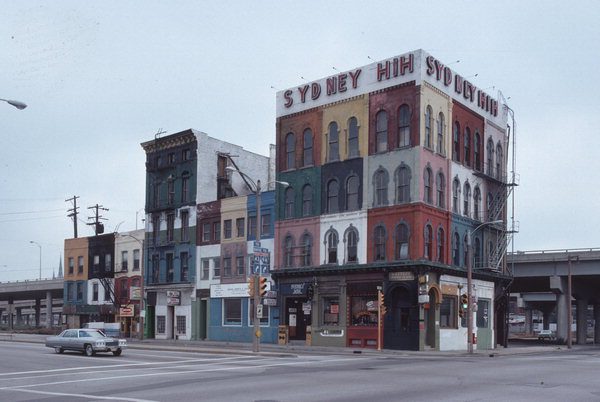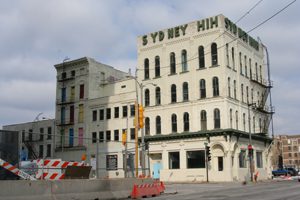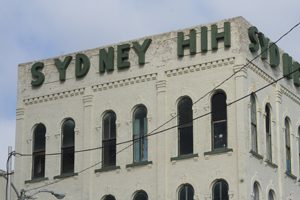All too often in cities around the country, a once-clear vision of a “catalytic development project” is easily blurred by protracted discussions about whose idea provides the silver bullet. At the same time, we want to keep the development pendulum from swinging in the direction of shortsighted action. As we work to renovate our nation's existing building stock in the coming years, communities like Milwaukee may find that success means reviving that happy medium which provides for both insightful planning and swift transformation.
The Sydney Hih building in Milwaukee reveals just how the development pendulum often gets stuck. Sydney Hih, situated on the western edge of the city’s central business district, looms over Milwaukeeans just before or after they have traversed the Park East corridor. For those who are not familiar with the Park East corridor, the name hails from the days when Milwaukee engaged in the nationwide freeway frenzy which enamored countless mid-20th century planners and architects.
The 2002-2004 razing of the Park East freeway became a national model for removing oversized vehicular corridors in central business districts, but left a fragmented land ownership pattern that included owners like the City of Milwaukee and Milwaukee County. Beautiful plans, design guidelines, and a form based code embraced the years following the freeway’s removal, and a mix of developments erupted on the corridor’s eastern fringes. Today, the illustrious Pabst Brewery on the corridor’s western end is seeing new life due to a late developer and philanthropist who committed to the brewery’s renaissance and established a family legacy. The land between these areas still provides a clear line of sight between the north and south ends of the corridor, with the exception of Sydney Hih.
The clarity: Sydney Hih has earned a place as a potential catalytic development due to its prime location and its having thrived during decades of disinvestment. In a way, Sydney Hih is a living example of the “survival of the fittest” in Milwaukee’s late 19th century building stock. 
The blur: Everybody wants his or her idea for the site to result in a major success story. Law suits, political tension between past government leaders, the rejection of developer requests for city commitments, and “secret deals” (see the Milwaukee Journal Sentinel article on this issue) have turned this catalyst into a stalemate. Sydney Hih is now becoming an unfortunate reminder of stagnancy that some no longer wish to see in the landscape. The secret $769,000 purchase of Sydney Hih by SH Acquisition LLC, an entity through which the City of Milwaukee and Milwaukee Economic Development Corporation funded the transaction, came to light during an effort to lure a major corporation to the Park East from a neighboring municipality. Just two weeks back, the major corporation politely declined the City’s packaged offer, which portrayed the land under the Sydney Hih structures as the predominant asset. The collective sentiment in the media regarding the Park East corridor and Sydney Hih is now “let’s just make something happen,” leaving a catalytic renovation of Sydney Hih without much of a supportive voice.
The result: What could be an iconic, symbolic, and thoughtful renovation of the structures representing the Park East corridor’s predominantly absent history is now a blurred concept which is barely hanging by a thread. 
1977 Photo with Elevated Freeway: Jeffrey M. Dean (via the WI Architectural and History Inventory)
Remaining photos by Stephanie Allewalt.





This should have been read at the ZND meeting when they voted to allow the buildings to be razed.